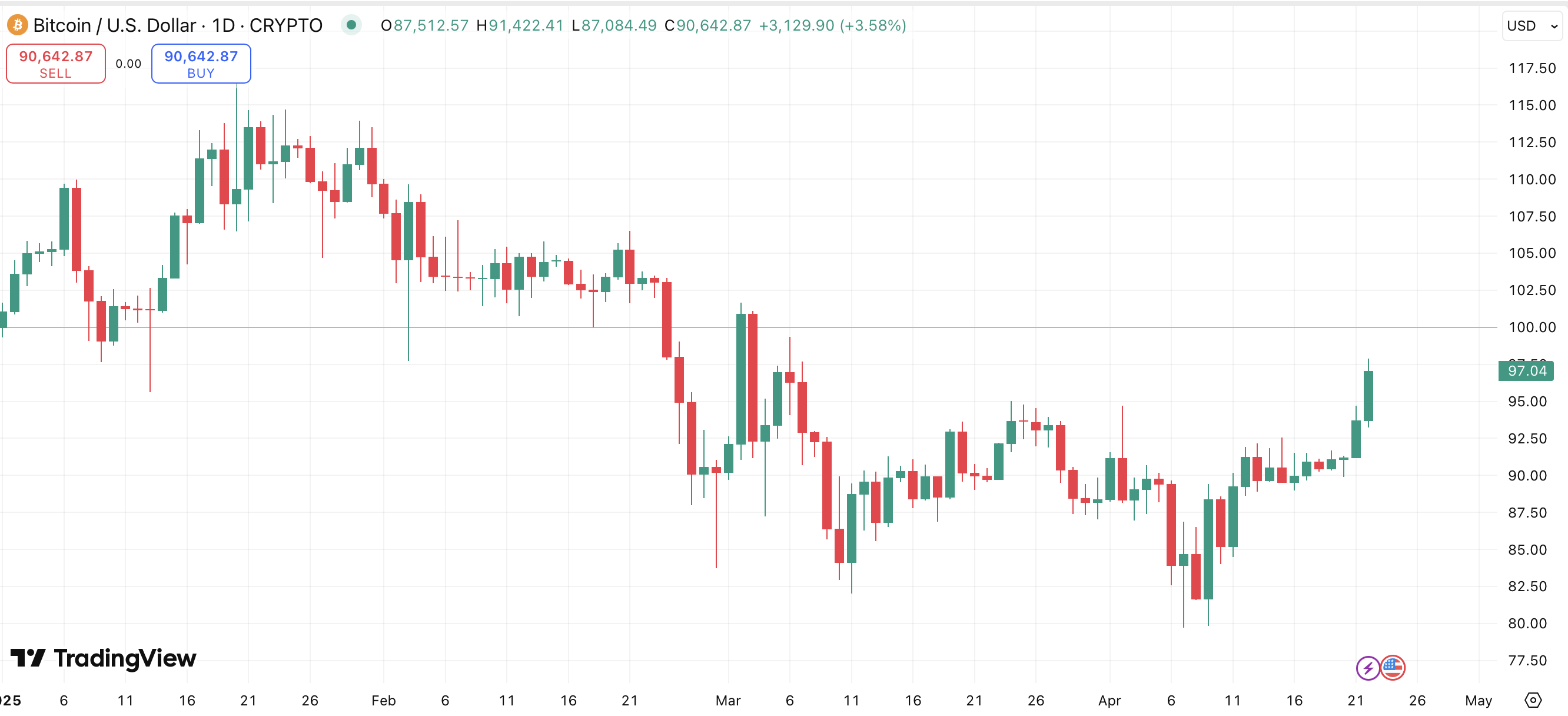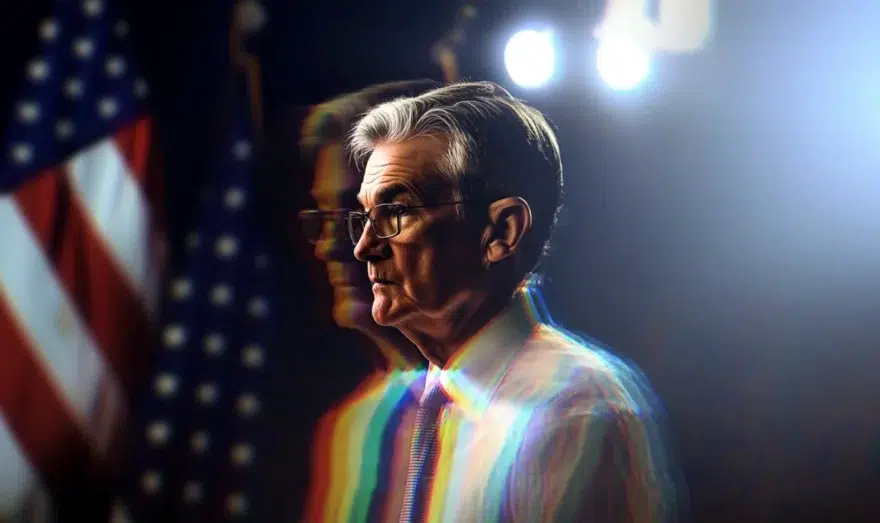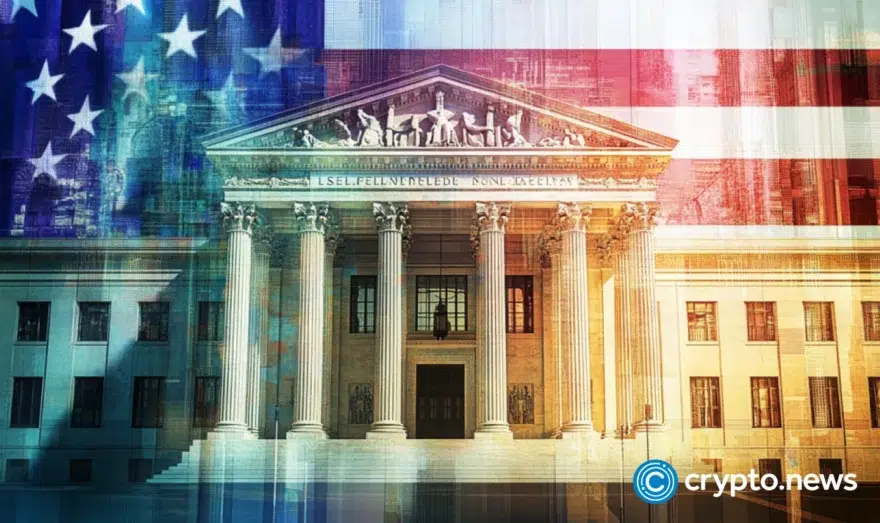2025 is no longer about cycles — Bitcoin is reading something else entirely

How much of Bitcoin’s 2025 momentum is being driven by fundamentals, and how much by macro systems that no longer offer reliable direction?
Table of Contents
Fragile growth amid policy tightropes
The global economy in 2025 is walking a tightrope. The deliberate reengineering of trade rules by the U.S. has created a new layer of uncertainty, making global markets more volatile and less predictable.
Under President Trump, Washington’s sweeping tariff hikes have effectively rewritten the post-globalization playbook. These changes have reignited fears of a potential recession, pushing central banks, corporations, and policymakers into a state of constant recalibration.
According to Goldman Sachs, the effective U.S. tariff rate is expected to jump by roughly 16 percentage points this year alone. While this may sound like a technical tweak, the real-world consequences are already unfolding.
Goldman now expects U.S. GDP growth to slow dramatically, revising its forecast down to 0.5% for 2025. The odds of a recession over the next twelve months have surged to 45%.
Meanwhile, unemployment is projected to climb to 4.7%, while core PCE inflation could rise to 3.5%. That combination of slowing growth and persistent inflation leaves little room for error in policymaking.
To cushion the impact, the Federal Reserve is expected to deliver three rate cuts, described by analysts as “insurance cuts.” Yet, the Fed must ease labor market pressures without reigniting inflation, a task that becomes even harder when the global economic environment is this fragile.
Japan is already feeling the spillover. As an export-heavy economy, it is particularly exposed to disruptions in global trade. Slower external demand and increasingly cautious corporate investment have dragged down Japan’s growth prospects.
Forecasts now put its GDP expansion at just 1.0% in 2025 and 0.7% in 2026. The Bank of Japan, which had been preparing to raise interest rates, may be forced to delay those plans if a U.S.-led recession begins to unfold.
Europe is in a similar state of recalibration. Goldman Sachs has cut its Euro area growth outlook to 0.7%, while also reducing expectations for both inflation and the European Central Bank’s terminal rate.
The United Kingdom, too, faces a dampened economic outlook, driven by weaker global demand and continued financial tightening.
In emerging markets, the narrative echoes across regions. China’s growth forecast has been reduced to 4.0% for 2025. Even more striking is the expectation that inflation could turn negative. While further rate cuts are anticipated, these may do little to counteract the broader drag from tariffs and falling commodity prices.
Other developing economies, particularly in Latin America, Central Europe, and parts of Asia, are scaling back their projections as well. For many of them, tighter financial conditions and shrinking global demand have become defining obstacles.
As Nobel laureate Paul Krugman noted, “It’s not the size of the policy shift, but the uncertainty around it that could cause a recession. And at this point, policy reversals may actually worsen the situation because they would enhance uncertainty.”
So what does all of this mean for capital markets, investment strategies, and the crypto sector heading deeper into 2025? Let’s explore.
Political pressure meets market stress
Equity markets are beginning to show visible signs of strain, not just from the tariffs themselves, but from the growing sense of disorder surrounding economic policy.
On Apr. 21, the S&P 500 dropped 2.4%, the Nasdaq fell 2.6%, and the Dow plunged nearly 1,000 points, erasing all gains from the prior week. The correction wasn’t sparked by any single event. Rather, it was the result of overlapping risks now converging in unsettling ways.
The first pressure point is the Trump administration’s tariff decisions. A 145% import tax on Chinese goods has reignited tensions with Beijing, prompting global investors to reevaluate supply chain exposure, manufacturing costs, and long-term earnings assumptions.
In turn, China has issued strong warnings, threatening retaliation against any country that aligns with U.S. trade terms it deems harmful. This tit-for-tat tone has reintroduced an element of strategic risk that goes beyond pure economics.
Further compounding the situation is the widening rift between the White House and the Fed. Chair Jerome Powell recently acknowledged that the latest wave of tariffs could push inflation higher while slowing growth, a difficult combination that limits the Fed’s policy flexibility.
But what’s adding more fuel to the volatility is how President Trump has chosen to respond.
In recent days, Trump publicly called Powell a “major loser” and repeated his view that interest rates should be slashed immediately. He even remarked that Powell’s “termination cannot come fast enough.”
Behind the scenes, reports suggest that the White House is actively exploring legal pathways to remove Powell before his term ends. This has stirred concerns that the Fed’s long-standing independence may now be at risk.
The fallout is being felt beyond equities. The U.S. dollar index, which tracks the greenback against a basket of major currencies, has dropped to 98.52 as of this writing, down from 99.38 last week, marking its lowest level in three years.
While a weaker dollar typically supports exports and corporate earnings, this decline appears to reflect deeper concerns about the consistency and credibility of U.S. macro policy.
Bond markets, too, are reacting. The yield on the 10-year Treasury note has climbed to 4.38% from 4.33%, continuing an upward trend this month.
This suggests that investors are selling off long-dated government bonds, either in anticipation of rising inflation or as a defensive move against the risk that the Fed could be pushed into premature rate cuts under political pressure.
At the same time, gold has quietly surged to an all-time high. It briefly crossed $3,500 per ounce before settling around $3,451 as of Apr. 22. In such a climate, the positioning of both traditional risk assets and alternatives like crypto is likely to shift.
Crypto moves up the macro ladder
While global equity markets have begun to show cracks, the crypto market has quietly taken a different route. As of Apr. 22, the total crypto market cap has climbed to $2.77 trillion, up from $2.40 trillion on Apr. 9 when trade tensions first escalated, an increase of roughly 15%.
A major factor driving this recovery is renewed institutional interest in Bitcoin (BTC). According to data from SoSoValue, spot Bitcoin ETFs saw net inflows of $381.4 million on Apr. 21, more than 250% higher than the previous day, marking the largest single-day inflow since Jan. 30.
However, that confidence hasn’t extended to Ethereum (ETH). In contrast to Bitcoin’s rising tide, Ether-based spot ETFs recorded outflows of $25.42 million on the same day, marking the eighth consecutive week of net withdrawals, bringing total outflows to nearly $910 million since the trend began.
Bitcoin’s growing dominance is also reflected in its price action. Despite turbulence in equities, Bitcoin has continued to build on its gains, crossing the $90,000 threshold as of this writing and trading at $90,600 levels. Meanwhile, BTC’s market cap has returned to levels above $1.80 trillion, a milestone not seen since late March.

Ethereum’s path, meanwhile, is moving in the opposite direction. The ETH/BTC ratio has now dropped to 0.01787, a level not seen since Jan. 2020.
In the last 24 hours alone, the ratio has slipped nearly 5%, and over the past month, it has fallen by 24%. Year-over-year, the decline is even more stark, with Ethereum losing 67% of its value relative to Bitcoin. As of this writing, ETH trades at $1,700 levels.
In essence, while the broader financial system continues to wrestle with uncertainty and policy risks, Bitcoin has not only managed to decouple from equities in the short term it has also retained its upward momentum. The broader crypto market is slowly catching up.
Structural rotation is underway
Bitcoin’s short-term outlook appears to be shifting from a reactive trade to something more structural. The signals forming now suggest that 2025 may not be defined by day-to-day risk sentiment but by a deeper reconfiguration of liquidity flows, policy responses, and how investors define hedge assets in an increasingly unstable environment.
Macro investor Raoul Pal offers a pointed take, the dollar needs to weaken. Not through sudden devaluation, but through a gradual, managed decline that can relieve repayment pressures on countries holding large amounts of dollar-denominated debt.
According to him, a softer dollar, particularly one influenced by broad liquidity expansion, could become the single most powerful catalyst for asset repricing in 2025. Bitcoin stands to benefit directly from that.
Meanwhile, the bond market is applying pressure of its own. As macro analyst Tomas points out, the recent rise in the 10-year Treasury yield toward 4.5% is already reshaping the policy expectations.
The Trump administration has reportedly softened its tariff tone in response, recognizing that persistent yield spikes could tighten financial conditions too sharply. If yields continue to climb, the need for either diplomatic trade progress or liquidity injections becomes more urgent.
That liquidity could arrive in several forms. The Fed remains the obvious actor, but the U.S. Treasury is also in play. Its recent consideration of bond buybacks, aimed at improving liquidity in older securities, hints at a broader toolkit being quietly assembled.
Each of these levers increases the flow of capital, which could indirectly lift Bitcoin by boosting available liquidity across risk markets.
Still, the economic undercurrent is weakening. Growth projections are being revised downward across the board. High-frequency indicators like the Citi Economic Surprise Index and real-time GDP trackers are rolling over.
The broader macro picture isn’t one of strength. It’s one of softening momentum, and that opens the door for rate cuts, or at least the growing anticipation of them.
That anticipation is no longer apolitical. Trump has publicly pushed the Fed to cut rates, a move that may not dictate outcomes but undoubtedly shapes investor expectations. Political noise is becoming part of the macro equation, and markets are reacting accordingly.
Meanwhile, investor behavior is beginning to reflect this shift. As noted by Axel Adler Jr, wallet activity has surged in the past ten days, signaling renewed accumulation.
He compares the current trend with early 2021, when similar inflows followed structural shocks like China’s mining ban and major price resets. This return of strategic buyers is happening just as the traditional macro playbook starts to break down.
If the prevailing forces, slower growth, political pressure on monetary policy, soft liquidity maneuvers, and a weaker dollar persist through the second half of 2025, Bitcoin could see growing institutional alignment.
For now, the signals are subtle but telling. Capital is beginning to rotate, quietly and purposefully, and Bitcoin is once again part of the core conversation.
Disclosure: This article does not represent investment advice. The content and materials featured on this page are for educational purposes only.















